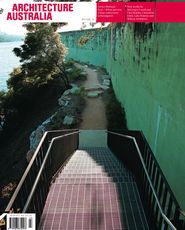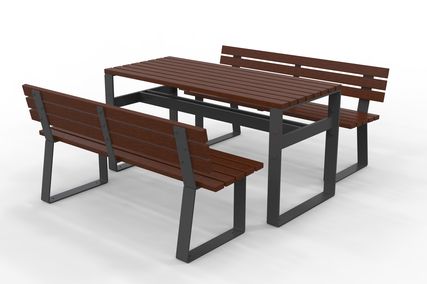“Look beyond the efficiency of the autonomous building and consider how buildings might operate as part of a collection of buildings and landscapes.”
Carbon emissions must be dramatically reduced and according to CABE, this means reinventing how we live. As concern and action continue to grow, we examine the views of several “emerging” architects. Their responses are intriguing, imaginative and commonsense approaches to the future of Australian cities and architecture.
“It may seem either benignly distant or impossibly immense, but it is the most important challenge facing our society today,” says Jane Monk, winner of the Institute’s SA Chapter 2008 Emerging Architect Award, now with Denton Corker Marshall in London. “As an industry that uses such a massive proportion of energy and material resources, we have an obligation to behave in an ethical manner and lead the way. We need an integrated and holistic approach to urban design and planning, and one that crosses over to the vast amount of construction that occurs without architect input.”
A key point was simplicity – passive rather than active building systems, with far less reliance on high-tech solutions. All discussed more “liveable cities”, the pursuit of low-energy building and transport solutions. Jacqui Alexander, V-YAG (Young Architects and Graduates) Chair and coeditor of POST magazine, believes “a fundamental shift is beginning to occur within the profession – understand(ing) architecture as being part of a ‘deep ecology’ … avoid(ing) simply improving bad practices, and filling the pockets of big corporations trying to capitalize on the ‘green’ fad.” Jacqui encourages us to “look beyond the efficiency of the autonomous building – and consider how buildings might operate as part of a collection of buildings and landscapes.”
Anthony Balsamo, Emerging Architects and Graduates Network (EmAGN) national chair and Walter Brooke associate architect, SA, believes architects play a primary role in the built environment. “In wading through the increasingly complicated process of any project, we must guide our clients and colleagues around greenwash, too much building intelligence, and a media-interpreted view of sustainability … A demand for quality and longevity and a willingness to pay for it has to be the future of architecture.”
Indeed, the demands of sustainable design have meant looking at the design problem differently, by dismantling the layered complexity of our fossil fuel/industrial age cities. Peter Ho of PHOOEY Architects received an Institute national award in 2008. “Four shipping containers were transformed into the Children’s Activity Centre at Skinners Playground. The form and aesthetics were generated by sustainable strategies aimed at zero waste … the whole container was reused.” Peter will speak at the Institute’s National Architecture Conference, extra/ordinary. Curated by Melanie Dodd, program director of the RMIT Architecture Program, extra/ordinary explores the theme of innovation coming from “ordinary” or meagre means. It re-evaluates that which we often overlook: beauty derived from modest means.
“We need a debate about appropriate and measured responses to environmental challenges, versus the hyped, open-chequebook sustainability projects.” Nathan Judd, original EmAGN co-founder and ACT practitioner, sees sustainable architecture as a hybrid of traditional commonsense building science with quantifiable outcomes. Jane echoes Nathan’s view: “Competition will heat up for resources and Australian cities built on the myth of boundless plains will need to rethink how they operate and make better use of the resources they already consume. Either they will need to look to European examples of densification and compact living, or if space is still the priority, then that space will need to work harder.” Jacqui, similarly, imagines a self-sustainable suburban Melbourne. “I’d like to see a shift towards utilizing our existing gardens and parks as arable space … guerrilla gardens are popping up all over Melbourne’s inner city. Public parks, planter boxes and nature strips have been appropriated for community gardens.”
Architecture as always is the servant of the patron and will embody the values of the contemporary society that commissions it. Nathan points out the growing importance of architects advocating through non-traditional roles, including “project management, public service, development management and other allied roles”. “It is not too hard to imagine an architecture that expresses a more collective view of society,” he adds, “a more frugal/essential use of resources and a more integrated approach to building and environment.” There is much to be learned, then, from extra/ordinary, and as we look to the future, beauty and delight remain alongside innovation and sustainability as enduring qualities of the built world in which we will live.
Melinda Dodson
National President, Australian Institute of Architects















